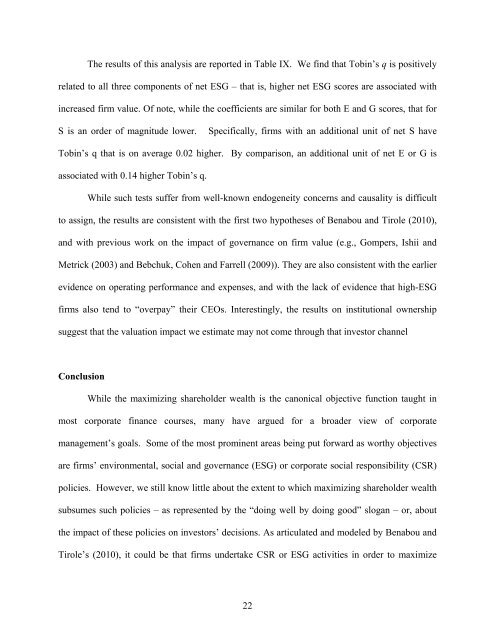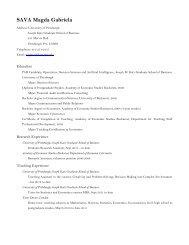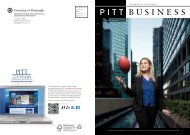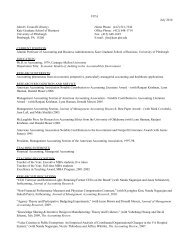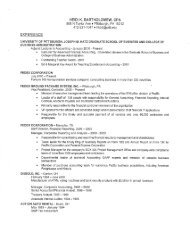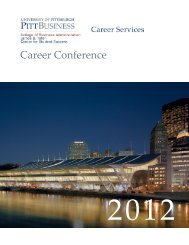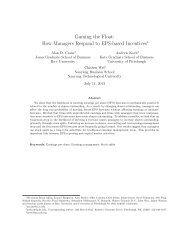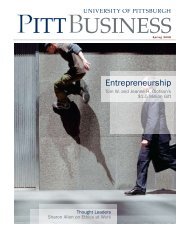Stuart L. Gillan, Jay C. Hartzell, Andrew Koch, and ... - Pitt Business
Stuart L. Gillan, Jay C. Hartzell, Andrew Koch, and ... - Pitt Business
Stuart L. Gillan, Jay C. Hartzell, Andrew Koch, and ... - Pitt Business
Create successful ePaper yourself
Turn your PDF publications into a flip-book with our unique Google optimized e-Paper software.
The results of this analysis are reported in Table IX. We find that Tobin’s q is positively<br />
related to all three components of net ESG – that is, higher net ESG scores are associated with<br />
increased firm value. Of note, while the coefficients are similar for both E <strong>and</strong> G scores, that for<br />
S is an order of magnitude lower. Specifically, firms with an additional unit of net S have<br />
Tobin’s q that is on average 0.02 higher. By comparison, an additional unit of net E or G is<br />
associated with 0.14 higher Tobin’s q.<br />
While such tests suffer from well-known endogeneity concerns <strong>and</strong> causality is difficult<br />
to assign, the results are consistent with the first two hypotheses of Benabou <strong>and</strong> Tirole (2010),<br />
<strong>and</strong> with previous work on the impact of governance on firm value (e.g., Gompers, Ishii <strong>and</strong><br />
Metrick (2003) <strong>and</strong> Bebchuk, Cohen <strong>and</strong> Farrell (2009)). They are also consistent with the earlier<br />
evidence on operating performance <strong>and</strong> expenses, <strong>and</strong> with the lack of evidence that high-ESG<br />
firms also tend to “overpay” their CEOs. Interestingly, the results on institutional ownership<br />
suggest that the valuation impact we estimate may not come through that investor channel<br />
Conclusion<br />
While the maximizing shareholder wealth is the canonical objective function taught in<br />
most corporate finance courses, many have argued for a broader view of corporate<br />
management’s goals. Some of the most prominent areas being put forward as worthy objectives<br />
are firms’ environmental, social <strong>and</strong> governance (ESG) or corporate social responsibility (CSR)<br />
policies. However, we still know little about the extent to which maximizing shareholder wealth<br />
subsumes such policies – as represented by the “doing well by doing good” slogan – or, about<br />
the impact of these policies on investors’ decisions. As articulated <strong>and</strong> modeled by Benabou <strong>and</strong><br />
Tirole’s (2010), it could be that firms undertake CSR or ESG activities in order to maximize<br />
22


